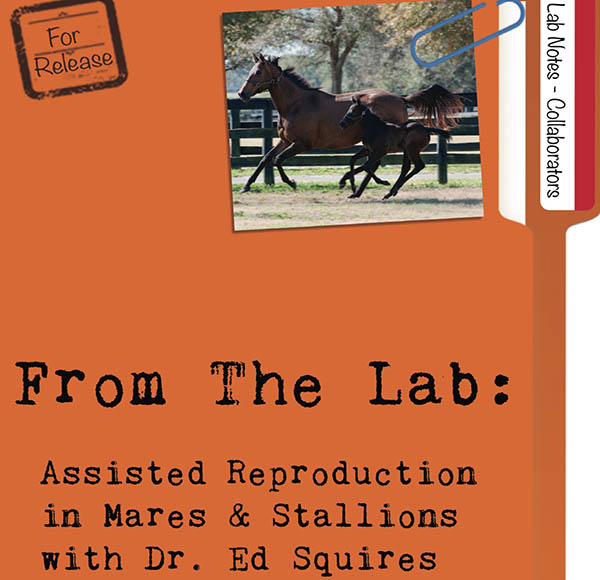From The Lab: Assisted Reproduction In Mares and Stallions
 By: Dr. Ed Squires, University of Kentucky’s Gluck Equine Research Center
By: Dr. Ed Squires, University of Kentucky’s Gluck Equine Research Center
In most breeds, reproductive technologies have been readily accepted. These techniques have expanded the production from mares and increased the efficiencies of reproduction in both mares and stallions. Some of the more recent technologies are discussed below.
Embryo transfers have been done in horses since the late 1970s. Embryos can now be collected in one area of the country and cooled and shipped to centralized embryo recipient facilities all over the USA.
The embryo, in the cooled state, will stay alive for 24 hours. To store embryos for an extended period of time, an ultra-rapid freezing method called vitrification has been developed. This allows embryos to be collected in late summer and fall and transferred into recipients early the following year. This is a technique quite popular with clients who own racehorses.
There is one problem, however, the equine embryo only freezes well if it is a 6-6.5 day old embryo and less than 0.3mm in size. Larger embryos can be frozen by eliminating 90% of the fluid in the embryo by micromanipulation.
One of the biggest changes in assisted reproduction is the routine production of horse embryos in vitro (test tube babies). There are now several veterinary centers than can perform this technique called intracytoplasmic sperm injection (ICSI).
Eggs are harvested from mares by an ultrasound guided approach, cultured in an incubator, injected with a sperm, cultured again until a day 7-8 embryo is formed and then transferred to a recipient. With this technique, embryos can be produced year-round and can be from sub fertile mares and stallions.
The embryo can also be biopsied for cells or fluid and the tissue or fluid used to determine the sex of the embryo or used for detection of genetic diseases or coat color.
On the stallion side, passing sperm through a column filled with silane (Equi Pure) will result in collection of a purified sample of superior quality. Sperm can be also passed through a flow cytometer for separation of X and Y-bearing chromosomes, allowing one to breed with sexed semen and pre-select the sex of the foal.
Stallions that prematurely die due to injury or post-surgery can have their testicles removed and the sperm in the storage area (epididymus) can be recovered and frozen, thus, salvaging that genetic material.
Top 5 Takeaways For Equine Assisted Reproduction
#1- There are several billion sperm in the storage area of a stallion’s testicles that can be harvested and frozen within 24 hours after the stallion dies.
#2- Semen quality can be improved greatly by centrifuging sperm through a filter to remove dead and damaged sperm.
#3- Eggs from mares can be collected by ultrasound guided techniques every few weeks throughout the year.
#4- Embryos can be biopsied without harm, and that material can be used for determining sex, the potential of genetic diseases, and the potential color coat of a foal.
#5- Sperm injection is now a routine method to produce foals from problem mares and stallions.
Reprinted courtesy of the Rutgers Equine Science Center’s Equine Science Quarterly. Visit esc.rutgers.edu, and subscribe to the Rutgers University Equine Science Quarterly for the latest in “Better Horse Care through Research and Education.”










